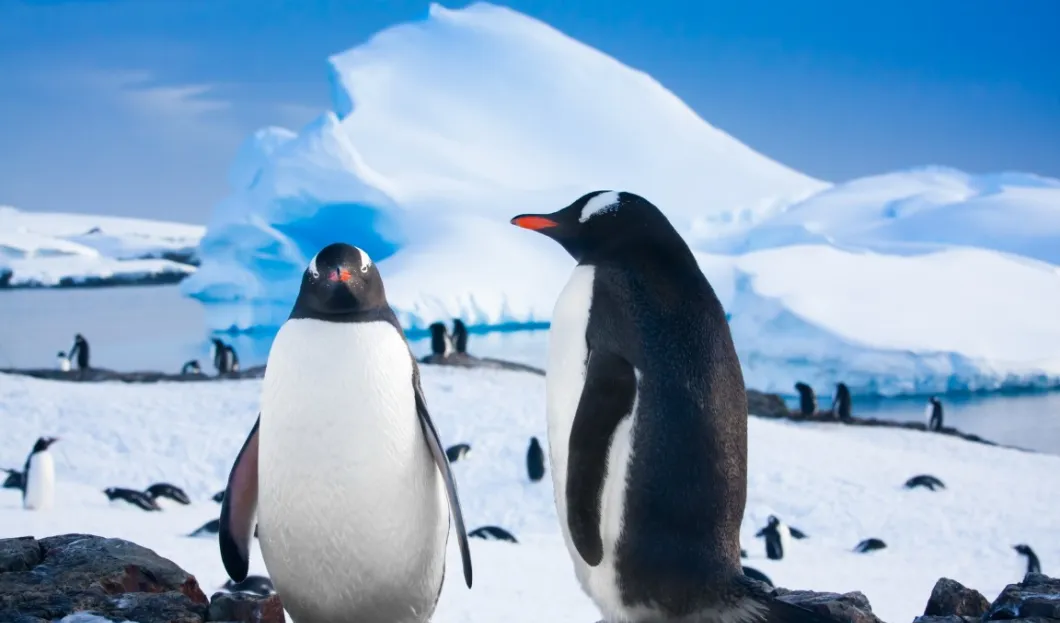
There are two things that are increasing in the Antarctic Peninsula: temperature and tourism.
An unprecedented temperature of 17.5°C was recorded by the World Meteorological Organization at Base Esperanza, in Argentina in March 2015.Various experts blame the growing amounts of visitors for the higher temperatures and call for regulated tourism.
As of July 2017, there are 63 vessels registered in the International Association of Antarctic Tour Operators, including some big names in the cruise industry such as Hurtigruten, Holland America Line, Seabourn, Silversea and Celebrity Cruises.
They brought a total of 38,500 visitors on tourist expeditions to the white continent in the 2015-2016 season, an increase of almost 10,000 compared to the last decade.
Tourism in Antarctica has been quickly rising. But do these trips that require high gas consumption are ultimately detrimental for the region or can they also be a positive force?
Passengers armed with binoculars and cameras with telephoto lenses, bright orange coats, adorned with several patches that testify their owners have lived other intrepid adventures.
When the ship approaches a large block of compact ice, and in the distance you can see a king penguin looking at the boat before walking swaying, the journey to the south of those travelers is over. The ocean is already too frozen to move on.
Rite of Initiation
"I'm glad we're not going to get to the Antarctic Circle," says naturalist and photography professor Eric Guth, who is involved in a research project created by James Balog as part of his work at Lindblad Expeditions, in which cameras have been set to monitor the glacial regression in Antarctic.
For many polar tourists, crossing that invisible boundary is like a rite of initiation.
"It's just a useless exercise in saying you did something abstract, while tons of fossil fuels were burned in the process," he argues. Contributing to climate change is not really the spirit of visiting this virgin nature.
"Increasing tourism in Antarctica is something we have to be very aware of, with all these boats burning fossil fuels," says John Durban, a British killer whale researcher working with the United States National Oceanic and Atmospheric Administration (NOAA, for its acronym in English).

Regulated Tourism
However, Durban insists that the benefits of bringing the public to these environments should not be underestimated: polar expeditions raise awareness of climate change and create wildlife ambassadors, while tourist dollars fund scientific expeditions such as the one about the orcas in which he participates.
"Tourism is not progressing in an unorganized way," says Durban. "The scheme of the International Association of Antarctica Tour Operators agrees to require best practices to minimize the impact on the environment."
The registered routes of the Association are limited to no more than 500 passengers on the ships, with only 100 of them on land at a specific time. And before approaching the Antarctic Peninsula, ships must comply with rigorous decontamination processes.
During his February trip, Kendrick Taylor, chief scientist at the National Science Foundation who investigates the role of greenhouse gases in climate change and the stability of the ice sheet of Antarctica, gave tourists scary data he has collected by analyzing samples of ice cores.
By containing old air bubbles and preserving layers of antediluvian dust, ice acts as an eternal record of atmospheric gases and, according to Taylor, clearly shows that CO2 levels are now at their highest point, at least in the last 800,000 years.
With the information provided by the ice blocks, Taylor says that by 2100 temperatures can rise by several degrees and, beyond numbers, it is even possible that areas such as Manhattan, for example, end up flooded. And the rise in temperatures in the Antarctic Peninsula in the last 50 years is already having effects on the marine life of the region.
A NASA report in March 2017 found less sea ice surrounding the Antarctic continent than at any other time since the records were made in 1979.
At Palmer Station, a research base in the United States, is located the southernmost souvenir shop in the world, with t-shirts, sweatshirts and decals for sale. Clearly, it was put there for the arrival of tourists.
And while hundreds of thousands of coat-clad tourists will come to visit penguins on the ice in the 2017-2018 season, profits from responsibly managed tourism in Antarctica will help fund scientific expeditions to the continent.
We need to change our habits to ensure survival. And for humans, the key to achieving this is through education. When a cruise ship returns home, it will be full of green activists on board.








